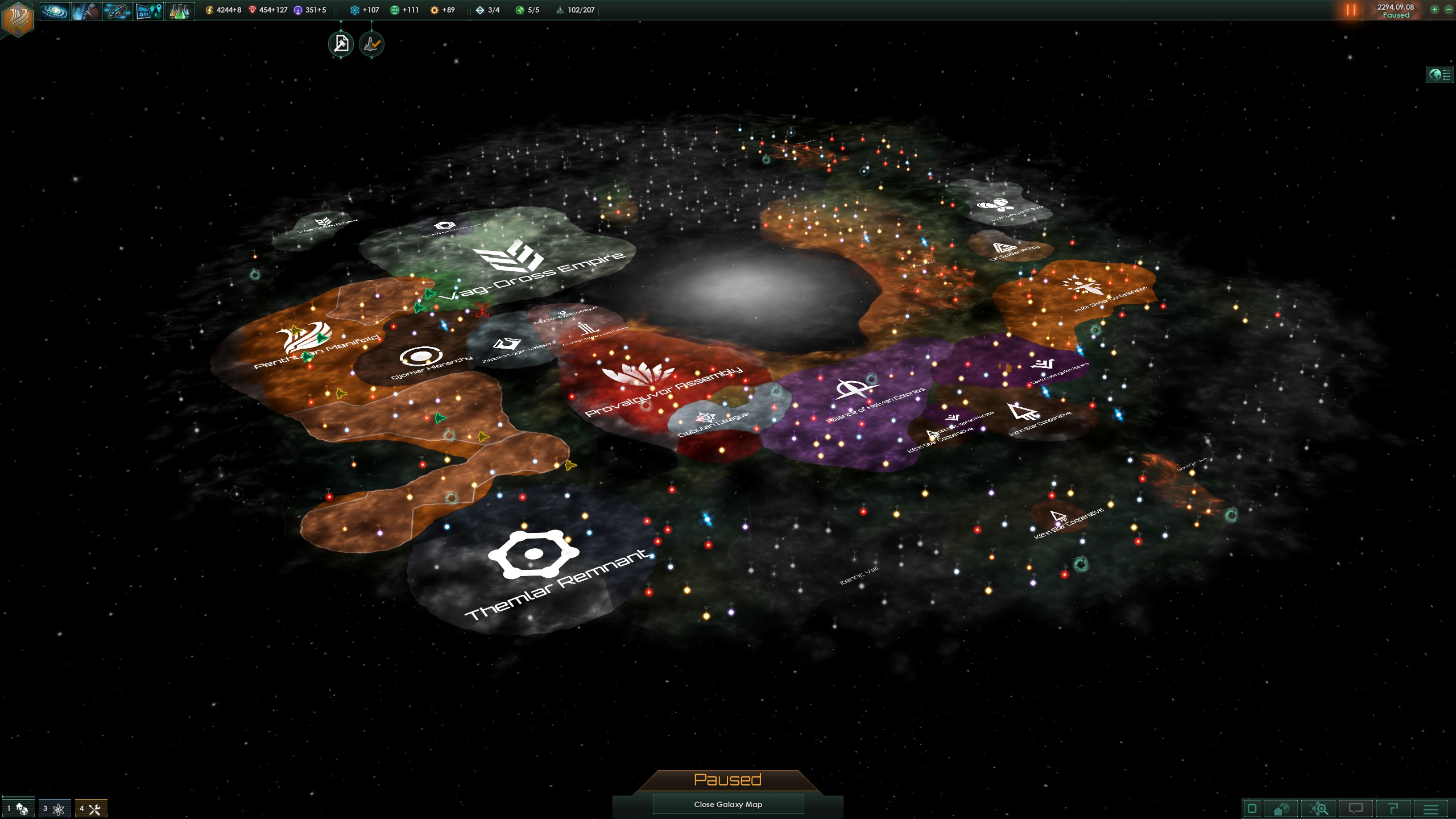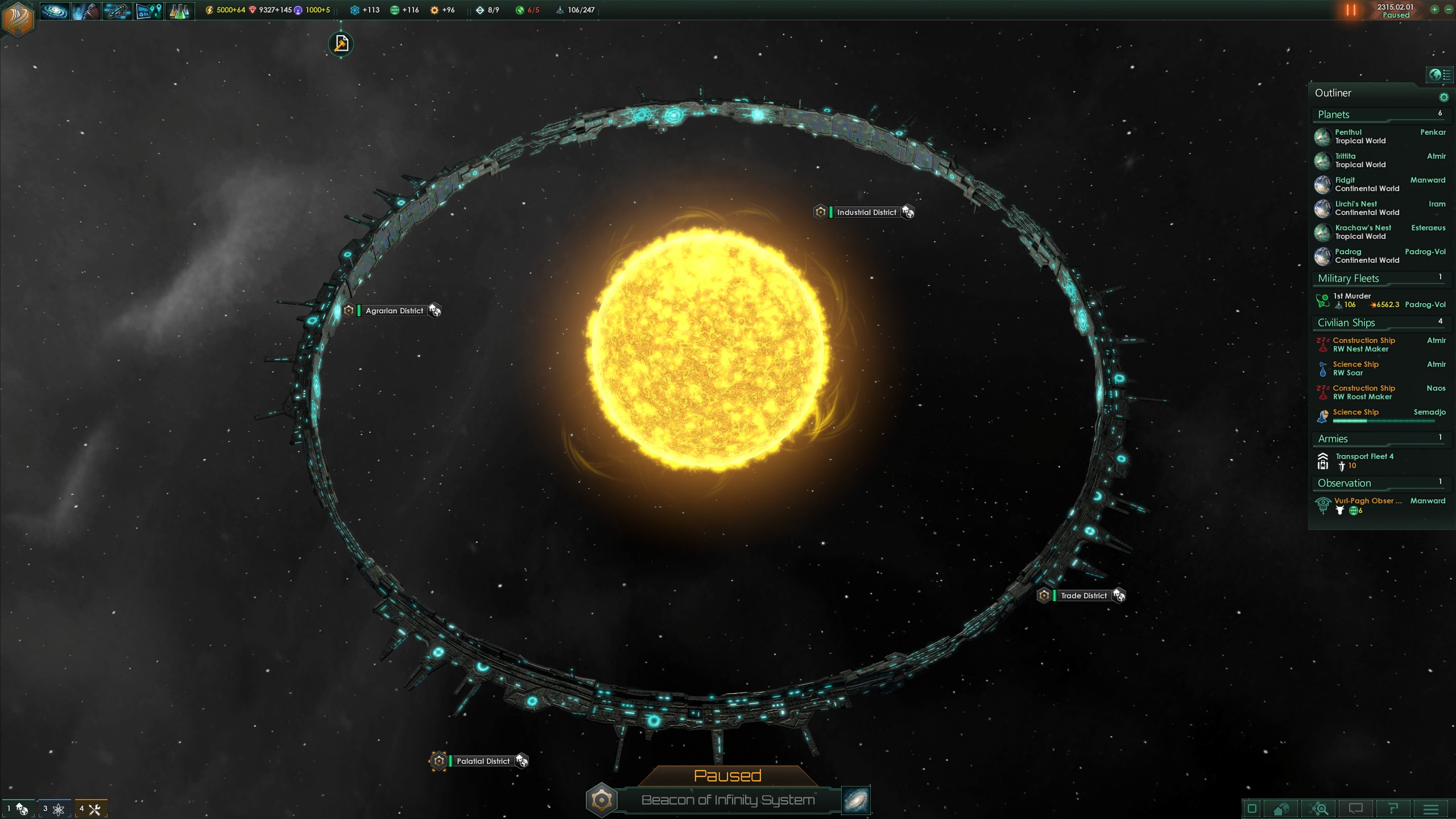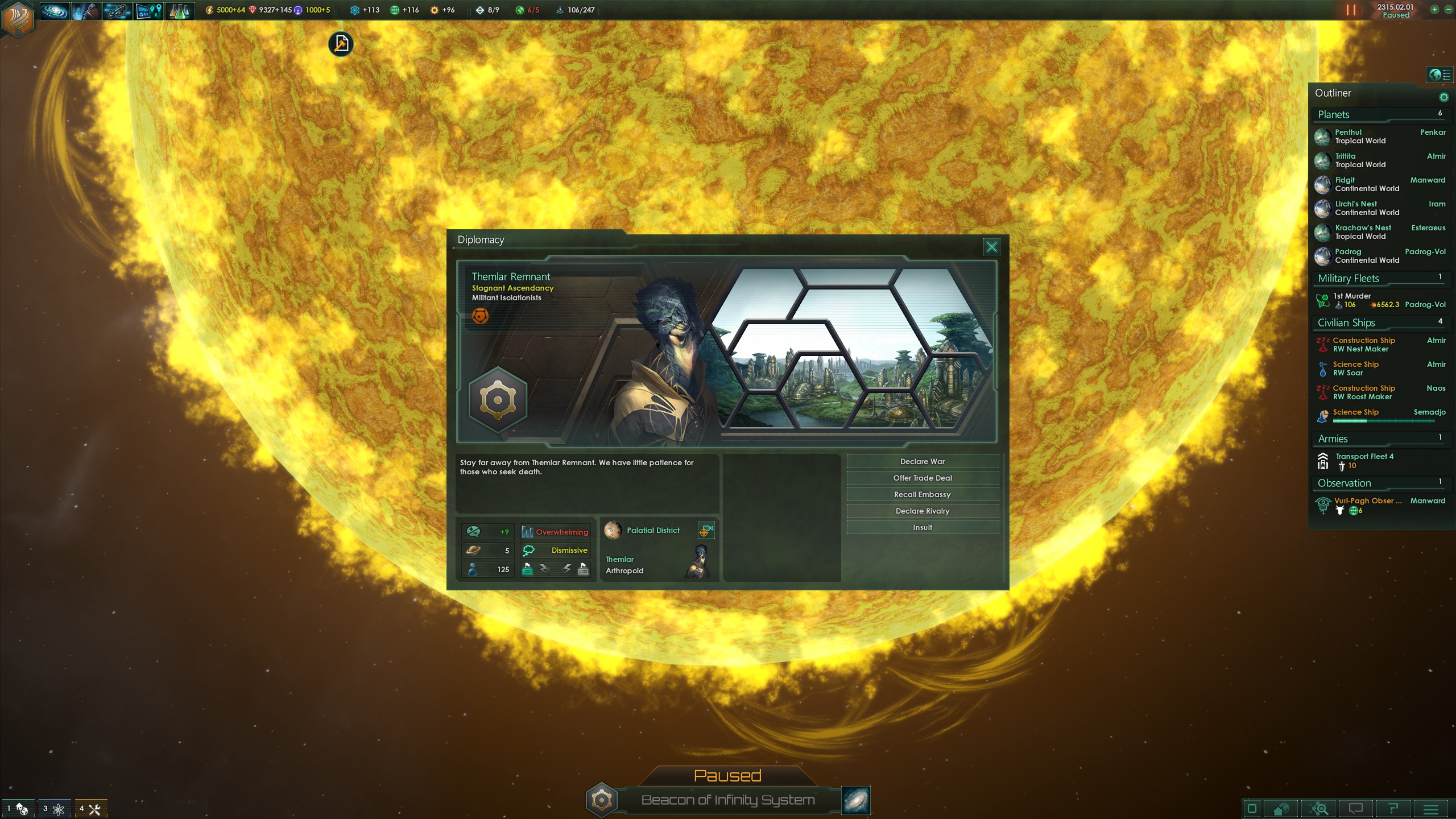Why I love Fallen Empires in Stellaris
What it's like to have demigods on your doorstep.

In its early hours, Stellaris drives home the vastness of space. Whatever race you might play—many-tentacled slug things, two-legged chicken nuggets or dogs with the wrong number of eyes—setting out from a bauble in the void is scary stuff. You learn quick sharp that you’re not alone, likely through contact with crystalline entities or gas grazers. You might wrestle with deserters from your own fleets. More troubling for your administration, you could find temples drifting through the stars that will challenge established theology.
Each of these discoveries is a thrill, partly because space looks much cooler than a map of medieval Europe, but also thanks to the rich backstory that accompanies each new finding. No amount of anomalies and research projects can prepare you for the first encounter with a Fallen Empire, however.
Fallen Empires are the remnants of stellar civilisations eons older than yours, broken down by some unknowable strife. Their power is bluntly classed ‘Overwhelming’ relative to your own. It’s lucky they want to be left alone. I mean, if I had achieved god-like potency, I wouldn’t want the children of the stars playing in my yard either.

They’re so secretive that it’s easy not to spot them until you trip over the doorstep. I was cruising down a limb of my spiral galaxy, scanning all that I could in an attempt to exploit the quadrant before my neighbours caught up—the patented ‘dibs’ method of space exploration. Intent on identifying the nearest border, I didn’t notice the ‘Beacon of Infinity’ marker until I’d sailed straight past. Startled but curious, I doubled back, still in ostensibly neutral space.
A space station vast beyond reckoning appeared as I entered the system. It encircled the star—an artificial planet of multiple districts. Before I could glide in for a recce, however, the angry ruler of the Themlar Remnant was on comms asking just what the bloody hell I was playing at, only in dignified technological demigod terms.
On the map, a perfectly circular boundary appeared, bisecting the galactic limb and cutting me off from further expansion. I’d been scooting about Themlar space for hours with all the awareness of a vegetable. Forced to make themselves known, they whisked my scientist off to who-knows-where. There was probably probing involved. All I know is that he turned up weeks later, dazed, confused and with a slight limp.

In its 4X phase, Stellaris is always upping the stakes. Just as you think you’ve got a handle on your local cluster, it drops an unimaginably powerful insectoid precursor race into the mix. Those first dozen hours capture all the spirit of classic sci-fi in which anything is possible and being the underdog is the most interesting. Fallen Empires make it so.
Keep up to date with the most important stories and the best deals, as picked by the PC Gamer team.

